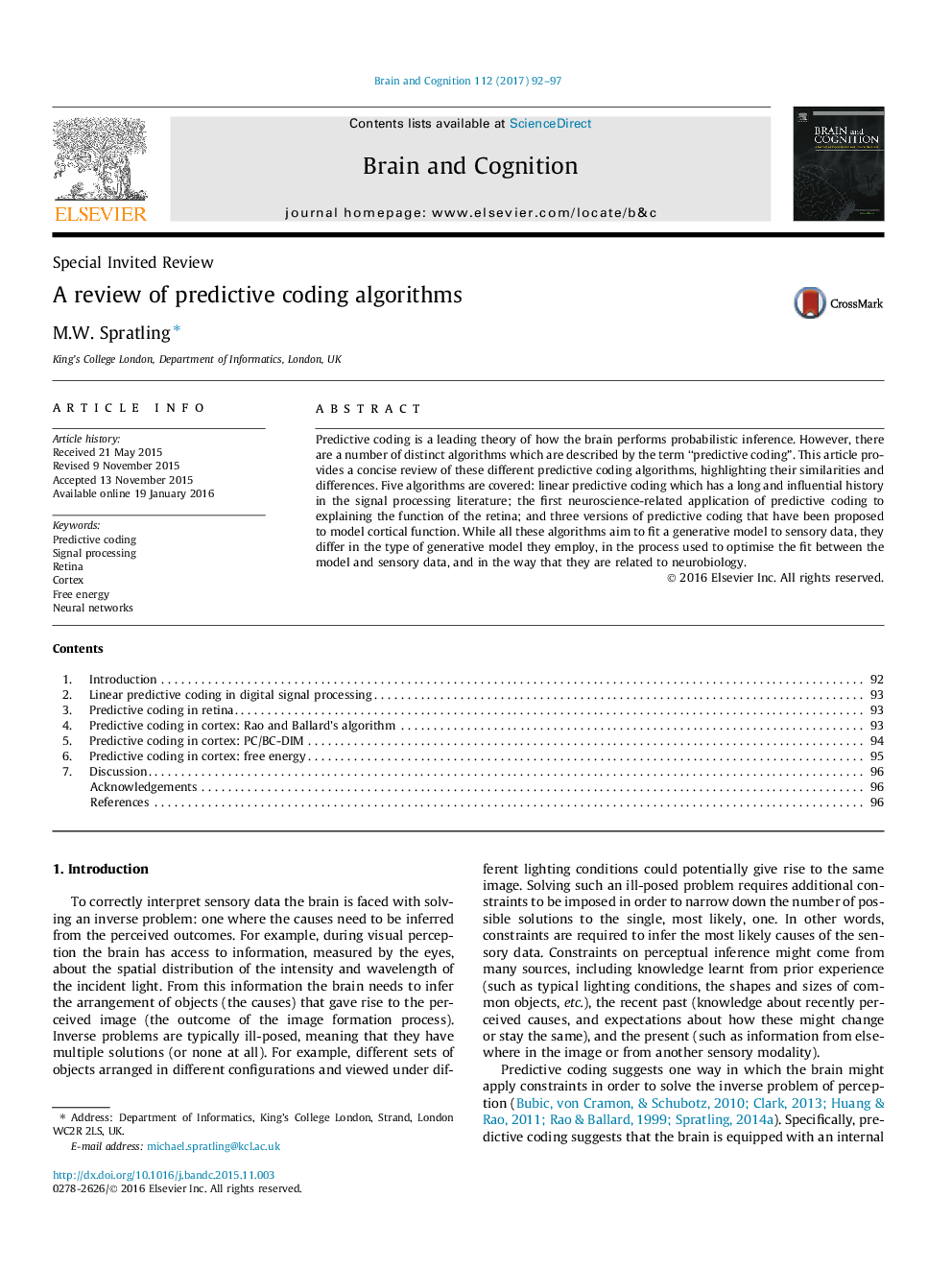| Article ID | Journal | Published Year | Pages | File Type |
|---|---|---|---|---|
| 5041104 | Brain and Cognition | 2017 | 6 Pages |
â¢Describes five predictive coding algorithms.â¢Explains how each algorithm is related and how they differ.â¢Clarifies the principle of predictive coding as applied to perceptual inference.
Predictive coding is a leading theory of how the brain performs probabilistic inference. However, there are a number of distinct algorithms which are described by the term “predictive coding”. This article provides a concise review of these different predictive coding algorithms, highlighting their similarities and differences. Five algorithms are covered: linear predictive coding which has a long and influential history in the signal processing literature; the first neuroscience-related application of predictive coding to explaining the function of the retina; and three versions of predictive coding that have been proposed to model cortical function. While all these algorithms aim to fit a generative model to sensory data, they differ in the type of generative model they employ, in the process used to optimise the fit between the model and sensory data, and in the way that they are related to neurobiology.
